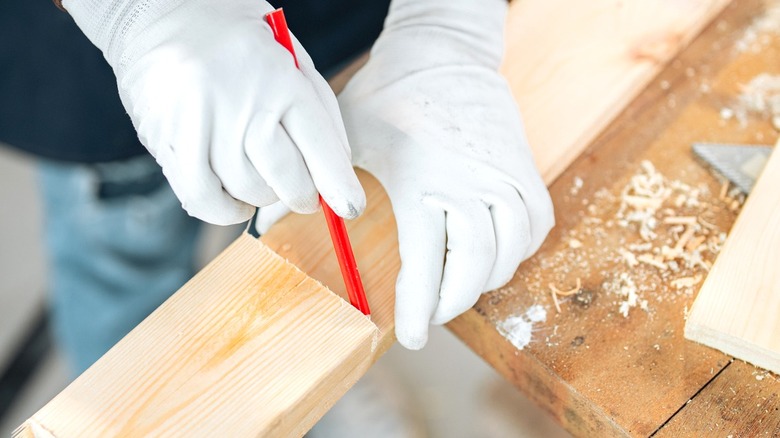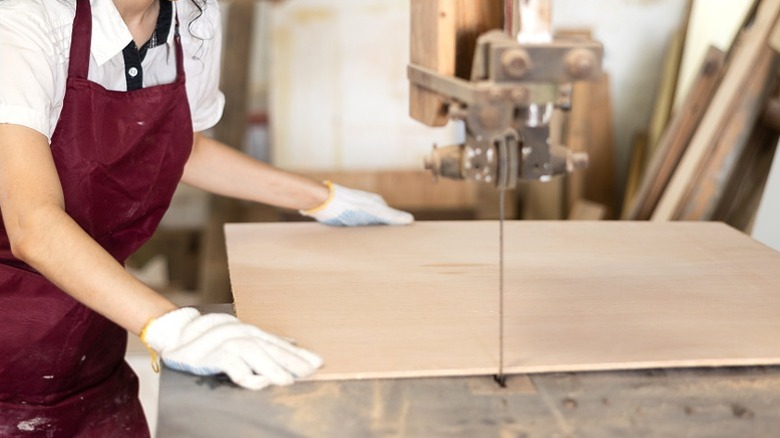Build Your Own Versatile Stackable Storage Shelves That Separate Into Tables
We may receive a commission on purchases made from links.
While there are a variety of ways to maximize storage in a small home, extra storage units to help manage clutter are welcome in almost any garage or home, especially when they feature a modular design. Multifunctional pieces are always more than the sum of their parts, providing adaptability and purpose as your needs change. Stackable storage shelves are a perfect example. You can change their arrangement and stack them for space-saving storage, or separate them into individual tables to use for work surfaces and to ease transportation. Of course, imbuing versatility into a DIY project can seem daunting with the creativity and know-how involved. But following a blueprint like the one from the YouTube channel Specific Love Creations, you'll realize the process can be remarkably straightforward.
For your stackable shelves, you'll only need some 2x4s, plywood or OSB sheets, and some wood dowels. The dowels act as the loose connectors for the shelf units, making them easier to secure together and separate as needed. You can make the shelves as tall, wide, or deep as you desire. Design them for any use, letting them function as ample storage surfaces when assembled and as chairs, workbenches, or display tables when separated. You don't need to overcomplicate things; you just have to be precise. If you can do that, there are many ways to customize the storage shelf to suit your needs.
Crafting the stackable storage shelves
Begin building your stackable storage shelves by making table frames with 2x4s. Fix the boards to the edges of adjoining boards with appropriate screws to form a square or rectangle, drilling pilot holes first to keep the wood from splitting. Keep the pieces on a flat plane while working, and use a square to line up the edges for consistent builds. Remember, accuracy and precision are crucial for the stacked unit to function properly, so you should focus on making each shelf's dimensions and details identical. You can then work on the 2x4 legs. But before you attach them to the frame, you have to drill holes and install dowels on the ends where the legs will interlock with the legs of the shelf above.
The dowel installation must be consistent for the shelves to connect, so be careful with your measurements. A dowel jig like the Lieberwell jig kit can simplify things. Or, you can use a tape measure or try a tape hack to line up your dowel holes. Drill a hole in one of your 2x4 legs with a brad point bit, drilling slightly deeper than half the dowel's length. Apply wood glue to the dowel, and hammer it into the hole until it's halfway in. Drill another dowel hole into the board's other end. Repeat this process for the remaining legs. Screw the legs to the outside of the frame's corners, and test the fit. Attach plywood shelf surfaces and start loading them with gear!
Customizing your stackable shelves for optimal storage
Tweaking the size of your shelves is only one way to customize your storage shelf for your needs and space. Find the add-ons that will give you the most utility for however you plan to use your build. An obvious option is additional shelving. You can easily install 2x4 spanners and add a plywood shelf for an extra space under the top, doubling each piece's storage capacity. The outside legs could also feature hooks for hanging items or small shelves without getting in the way of the stacking connections.
Other possibilities include putting casters on the bottom shelf to let you wheel the assembled storage shelf around or adding latches to secure each piece in the stack. A toggle latch clamp like Antrader buckle clasps can attach to the sides of the legs at the interlock point, firming up the assembly and preventing them from falling off one another. With so many options, this template may be meant more to inspire you to think about modular storage than anything. There are even simpler designs to consider, too. For instance, these frills-free plywood boxes from YouTube channel BuildersSA take no time to build but can twist, turn, and stack in infinite arrangements. Take stock of your skills, available tools, and organization opportunities. With enough imagination, you'll see why DIYing is almost always the best way to get the simple shelf system to solve all your storage needs.

